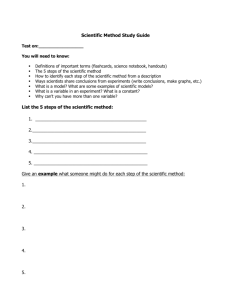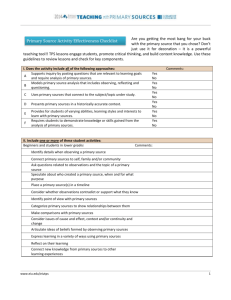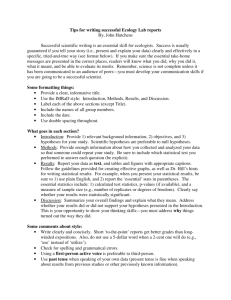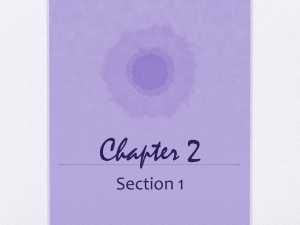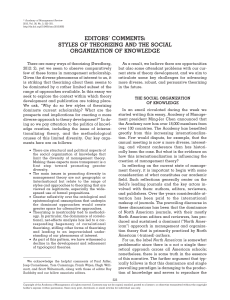modern chemistry chapter 2 test
advertisement
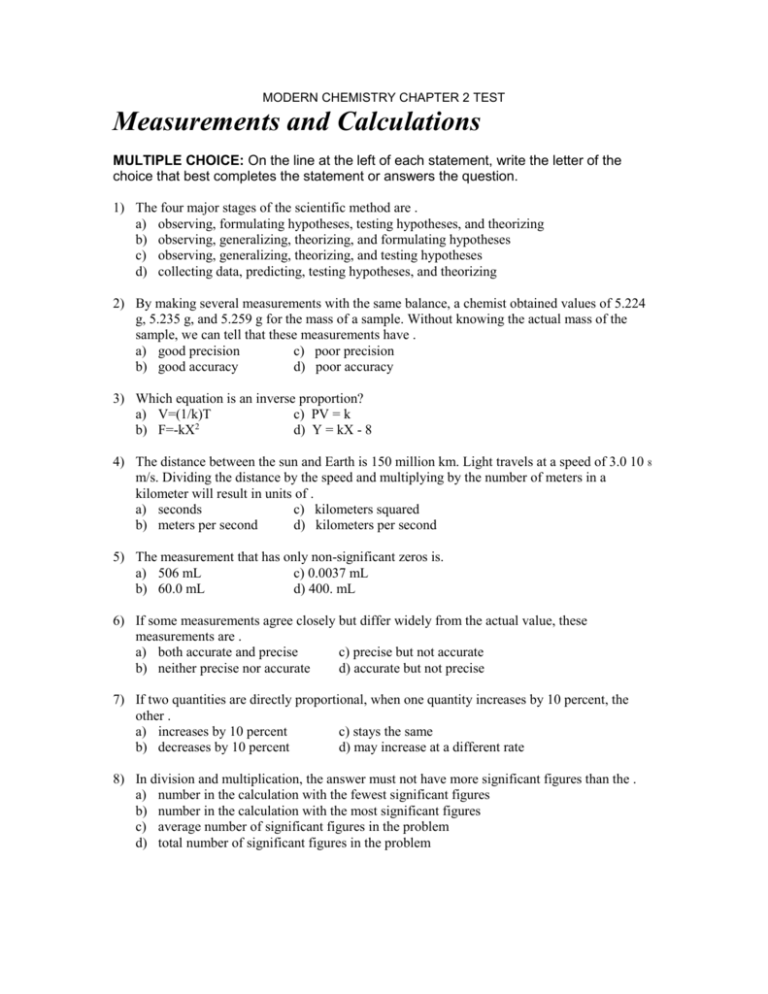
MODERN CHEMISTRY CHAPTER 2 TEST Measurements and Calculations MULTIPLE CHOICE: On the line at the left of each statement, write the letter of the choice that best completes the statement or answers the question. 1) The four major stages of the scientific method are . a) observing, formulating hypotheses, testing hypotheses, and theorizing b) observing, generalizing, theorizing, and formulating hypotheses c) observing, generalizing, theorizing, and testing hypotheses d) collecting data, predicting, testing hypotheses, and theorizing 2) By making several measurements with the same balance, a chemist obtained values of 5.224 g, 5.235 g, and 5.259 g for the mass of a sample. Without knowing the actual mass of the sample, we can tell that these measurements have . a) good precision c) poor precision b) good accuracy d) poor accuracy 3) Which equation is an inverse proportion? a) V=(1/k)T c) PV = k b) F=-kX2 d) Y = kX - 8 4) The distance between the sun and Earth is 150 million km. Light travels at a speed of 3.0 10 8 m/s. Dividing the distance by the speed and multiplying by the number of meters in a kilometer will result in units of . a) seconds c) kilometers squared b) meters per second d) kilometers per second 5) The measurement that has only non-significant zeros is. a) 506 mL c) 0.0037 mL b) 60.0 mL d) 400. mL 6) If some measurements agree closely but differ widely from the actual value, these measurements are . a) both accurate and precise c) precise but not accurate b) neither precise nor accurate d) accurate but not precise 7) If two quantities are directly proportional, when one quantity increases by 10 percent, the other . a) increases by 10 percent c) stays the same b) decreases by 10 percent d) may increase at a different rate 8) In division and multiplication, the answer must not have more significant figures than the . a) number in the calculation with the fewest significant figures b) number in the calculation with the most significant figures c) average number of significant figures in the problem d) total number of significant figures in the problem CHAPTER 2 TEST continued In each of the following measurements, name the quantity being measured. example: temperature 300 K 9. ___________________________22 s 10. __________________________3.5 mg 11. __________________________1.59 g/mL 12. __________________________16 J 13. __________________________34.5 km 14. __________________________0.75 mL 15. __________________________3.66 m 2 Identify the following data as qualitative or quantitative. 16. __________________________The solid dissolves in water. 17. __________________________The temperature of the solution is 3°C. 18. __________________________The solution is dark blue. 19. __________________________The density of the solution is 1.13 g/mL. 20. The speed of light is 300 000 km/s. This number equals ______________________km/s when it is written in scientific notation. 21. The quantity 0.202 g has ______________________significant figures. 22. If two figures are significant, how should the measurement 0.0255 g be reported? ________________________________g . 23. A Florence flask can contain 250. mL of liquid. Expressed in scientific notation, the capacity of the flask in liters is ________________________________. 24. A(n) _______________________________is something that has magnitude, size, or amount. 25. SI base units can be combined to form __________________________________________. 26. To change from one unit to another, you must first determine the appropriate _________________________________________________________________ CHAPTER 2 TEST continued Convert the following measurements. Write your answer on the line to the left. 27. ____________________________kg = 43.2 g 28. ____________________________mL = 5.4 L 29. ____________________________K = 27°C 30. ____________________________J = 250. cal (1 cal = 4.184 J) 31. ____________________________cm = 3.51 x 1010 nm SHORT ANSWER Write the answers to the following questions in the space provided. 32. How does a theory differ from a hypothesis? ______________________________________________________________________ ______________________________________________________________________ ______________________________________________________________________ 33. How does weight differ from mass? ______________________________________________________________________ ______________________________________________________________________ ______________________________________________________________________ 34. How are models used in science? ______________________________________________________________________ ______________________________________________________________________ ______________________________________________________________________ 35. Describe the graph of two quantities that are directly proportional and the graph of two quantities that are inversely proportional. ______________________________________________________________________ ______________________________________________________________________ ______________________________________________________________________ ______________________________________________________________________ ______________________________________________________________________ CHAPTER 2 TEST continued PROBLEMS Write the answers to the questions on the line to the left, and show your work in the space provided. Express each answer to the correct number of significant digits. 36. The mass of a 5.00 cm 3 sample of clay is 11.0 g. What is the density of the clay? 37. A length measurement is 1.40 cm. The correct value is 1.36 cm. Calculate the percent error. 38. The density of lead is 11.35 g/cm 3 . What is the mass of a 10.0 cm 3 piece of lead? 39. What is the volume in liters of a cube whose edge is 4.33 cm long? 40. What is the sum of 3.089 g and 0.07452 g?
